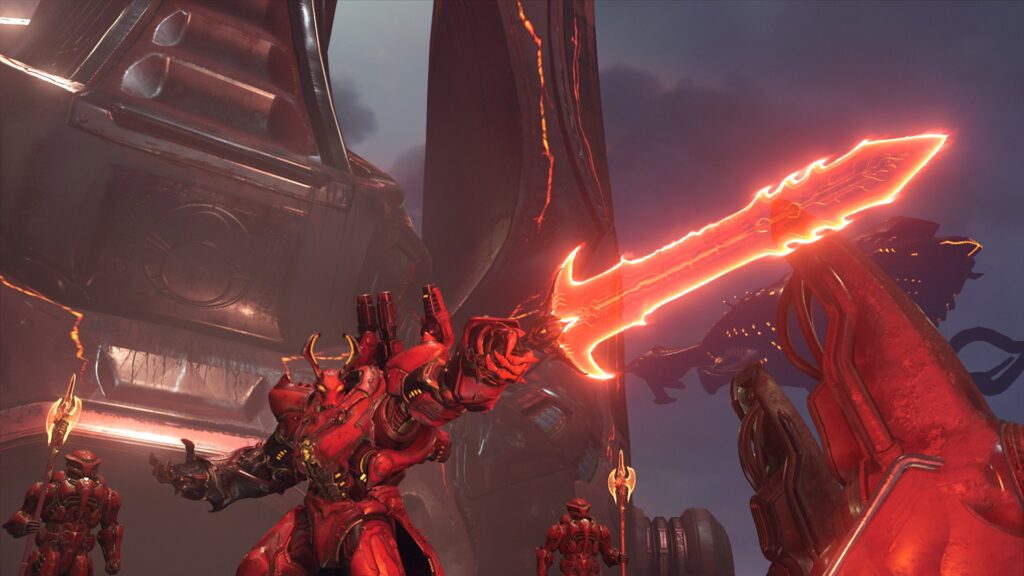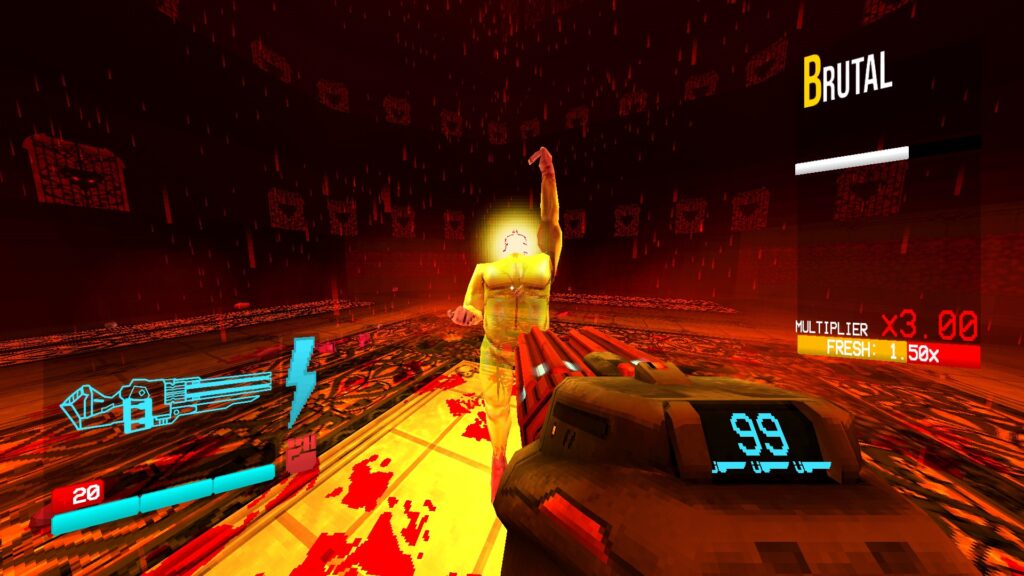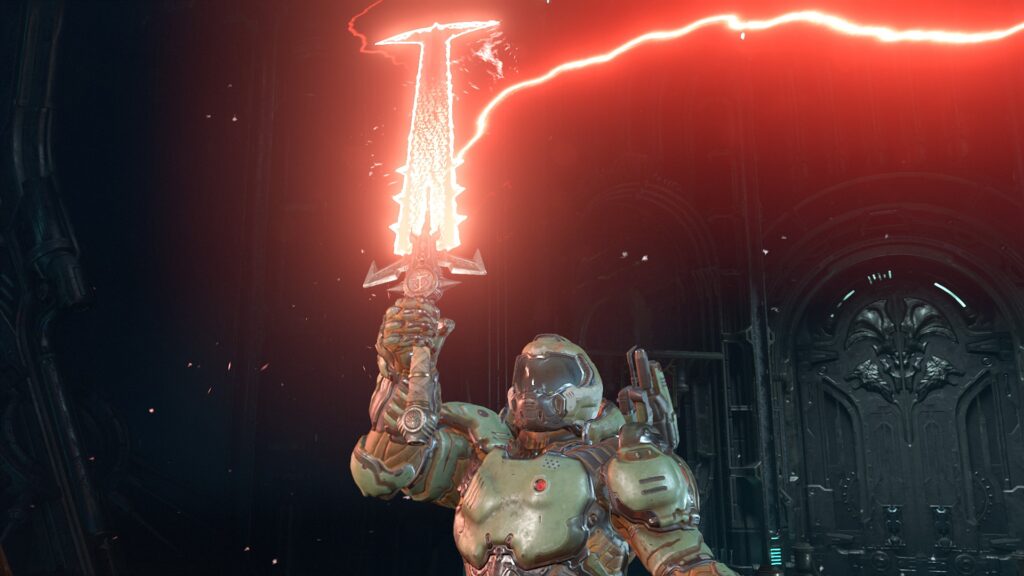As I was writing my shooter book, it meant revisiting some of the better shooters of the past 10 years, and another playthrough of Doom Eternal. Eternal is a game that you either love or hate for its unique designs, and I am in the love column. This time, I decided to take a look at more of the master levels, AKA: Doom Eternal‘s humbling mode, and why it’s such a great capper for someone to finish their play of the game with. Making good and challenging content is a lot harder than it sounds, and you can’t just bump up stats and call it a day.
Master Slayer
If you missed the updates after Doom Eternal‘s launch, the master levels were added in over the past years along with the DLC chapters I covered in another piece. These are brutally hard remixes of levels that don’t change the flow or path through them, but radically changes all the encounters and arenas in different ways. A hallway that was just a hallway, could now be a tiny arena with very large enemies coming at you. None of the enemies are given new powers or tricks, but it’s where and what you fight at any time that is completely different, and what makes good action design.
Rising to the Test
Anyone who plays action games knows that part of the thrill of them is reaching a level of mastery — when you can show off all the tech and abilities you’ve built up. What’s often the problem for action designers is figuring out how to really test the player beyond just stat raising. It’s easy to make something hard by just making an enemy tankier, or let it kill the player in a single hit, but making an interesting encounter is far more challenging.
It’s not about punishing the player for making the game harder, but letting the player be able to cut loose and use every ability, weapon, and technique available to them. A common trap I see is when the higher difficulty is used essentially to limit the player’s ability to play the game to only the most optimal and best weapons or strategies. Action design, or reflex-driven games, are at their best when it’s not about changing how the enemies behave but throwing new and interesting ways of having them in the space against the player.

There was no way I could show you an action shot of a master level and make it understandable, so enjoy this pose. (source author)
This is where the master levels of Doom Eternal really shine, as the player is fighting the same cyberdemons, the same marauders, and so on, but in new arrangements and patterns. Good enemy design is, in a way, evergreen throughout a game. The basic, starting enemy in your game, could be used in a nasty way if you want to really test the player. This is also akin to the kind of design I praise Nintendo for with their games — providing an easy an approachable main game, but cut loose for expert players with demanding bonus content. And that last point is important, most people are not going to be thinking about complete mastery in a game just because; more on that in a second. Good difficulty design balances a game for people of all skill levels.
A game that is nothing but the master levels of Doom Eternal might appeal to a very vocal minority of gamers, but I can guarantee that a game like that would never sell the same amount of copies or be praised as much as Doom Eternal. The beauty of reflex-driven design over abstracted games is that RPG mechanics make it a lot harder to take something already in the game and make it more challenging without directly changing it. This is why many RPGs for difficulties will make the enemies hit harder and take longer to defeat. However, for most of these games, higher difficulties don’t make the mechanics more interesting or reward the player for conquering them, it just adds more time and grinding.
If you want mastery to feel good and rewarding, not only must your game be set up for it, but you need to provide an interesting reason to chase after it.
P Stands for Pain
Another ordeal I inflicted on myself while writing my book was doing the P-Rank challenges in Ultrakill. It, along with Doom Eternal, are both very technical FPSs to play, and while Doom Eternal doesn’t grade you on your skill (thankfully), Ultrakill does. To unlock the hardest challenge in the game currently: P-2, a player must get the best rank on every level up to that point. That means killing all the enemies, doing it fast, and doing it stylishly; that last point will take some work.
Ultrakill features far more integration of mechanics and tech to its gunplay compared to Doom Eternal. Quick swapping between weapons is the major form of tech that players need to learn for advanced Doom Eternal play. In Ultrakill, not only do you have different melee options, but weapons have unique combos between them that change the dynamics of the attack. Your shotgun’s alt-fire launches an explosive core as a mock grenade…but if you shoot that with your rail cannon, it turns into a devastating AOE nuke that clears an arena of small enemies instantly.

Most of you reading this will never fight this guy in Ultrakill, and there won’t be a normal encounter designed this way.
Importantly, Ultrakill does not hide the fact that its weapons behave this way — every log entry on weapons will spell out combos that the player can use, and this is done specifically because of p-ranking. Getting the score to p range requires the player to be constantly swapping through weapons to keep their fresh rating high, and of course not taking a lot of hits. Like Doom Eternal, getting good at Ultrakill will make the game easier for you. The second Gabriel fight can seem like a huge difficulty spike when you first fight him; once you are able to P-rank him, it’s about 10 seconds or so of a battle.
While the player’s skill will grow as they learn the mechanics, that doesn’t make the gameplay any easier. Reaching P-2 delivers the hardest and craziest arena encounters to date. Ultrakill’s enemy design is unique among other shooters — each enemy type not only has a specific role, but unique rules and factors for how they behave. By combining these arrangements with different arenas and different enemies, it allows the game to go from very easy, to incredibly difficult encounters smoother compared to other shooters.
Like Doom Eternal, the player’s abilities and the enemies’ stats are not changing specifically for these expert challenges, but the game expects more from the player if they have any hope of winning. Beating P-2 of Ultrakill, including Sisyphus Prime, is a gauntlet and trial for the player.
But again, this ordeal is only meant for people who want to push this far into learning Ultrakill, whereas Doom Eternal’s master levels simply exist as an option at any time. You need to be both very good and very committed to Ultrakill if you want to see P-2 for yourself, and I shudder to think right now what P-3 will be like if this is any indication.
Perfected Pain
Mastery, again, is not something as a designer that you can force players to go after, but it does have benefits for casual players that you might not realize. Knowing that there is “more” to playing a game than just going from beginning to end can push someone to look deeper into the mechanics and game. This also allows people of different skill levels or styles of play to learn different tricks for playing it. While I may never get the timing for coin flip tech in Ultrakill, I can still get P-rank with rail cannon tricks. Designing your game to accommodate different skill levels can also lead to a more balanced game and easier to build levels and challenges knowing what kind of player is doing what.

Your job is to make the player feel this cool for learning your game.
Looking at the different difficulties for Ultrakill, the changes made to each setting are there to provide a different experience, but still test the player. While I will never play the game on the easiest one, someone can still enjoy and get the full gameplay of learning it with that setting. Anytime that you can provide the player with different ways of playing and learning a game, which is by their choice, will help keep someone engaged knowing that the decision to make it easier or harder is entirely on them and that there is no one “correct” way of playing the game.
For you: Can you think of other examples of games that did a great job of promoting and encouraging mastery in them? Let me know in the comments.
For more on shooters and FPS design, be sure to pick up Game Design Deep Dive Shooters when it is released.
- If you would like to support what I do and let me do more daily streaming, be sure to check out my patreon.
My discord is now open to everyone for chatting about games and game design.

